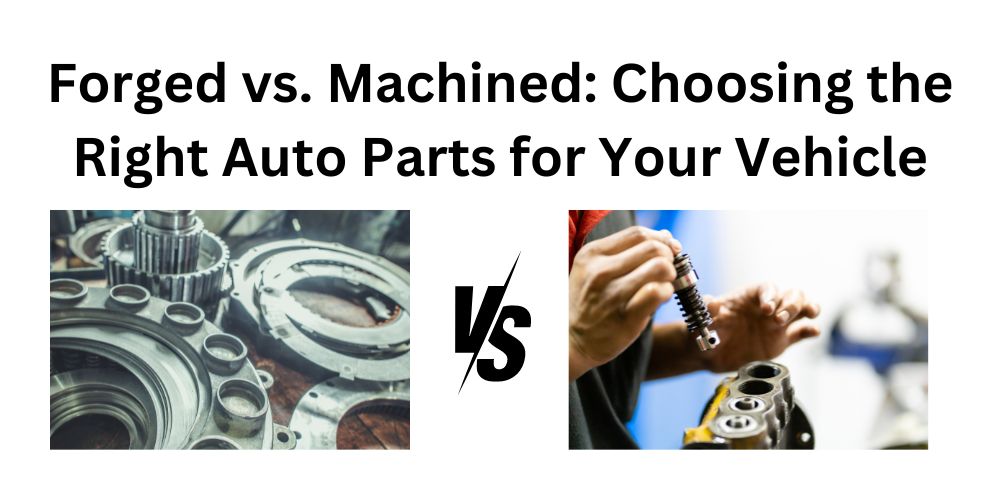Forged vs. Machined: Choosing the Right Auto Parts for Your Vehicle

Both forging and machining are metalmaking processes. But when to forge and when to machine the metal is when you will find the need to understand the difference between the two.
When it comes to manufacturing auto parts, choosing the right production method is crucial. This ensures optimal performance and durability. With this article, you will be able to understand the difference between the two processes and how they help automative manufacturers to make an informed decision in selecting the best method for producing specific components.
What is Forging?
Forging is a process of manufacturing that involves shaping the metal through the application of compressive force. During forging, a reliable forging parts manufacturer, heats and then hammer or press the metal billet to take the desired shape using a die. This process creates components that are of superior strength and durability.
This is because the metal’s grain structure is aligned to follow the contours of the finished components. Forged auto parts are known for their excellent mechanical properties, resistance to fatigue, and the ability to withstand high-stress applications.
What is Machining?
Machining is a subtractive manufacturing process that involves removing materials from a workpiece / metal to thereby achieve a desired shape and dimension. This is specifically done by using cutting tools such as drills, lathes, ad milling machines. Machining also allows a precise control over the final product’s dimensions and surface finish, that makes it ideal for producing intricate and complex components with tight tolerance.
What is the Difference Between Forging and Machining?
The basic difference between forging and machining lies in the way that the material is shaped to generate the final product. In forging, the metal is first deformed under high pressure, which results in parts that are of superior strength and structural integrity. Whereas, machining involves removing material from the solid block of metal to achieve the desired shape of the component, which may compromise the material’s inherent properties.
For critical components like crankshafts, connecting rods, and suspension components, often forged auto parts are preferred for its strength and reliability. Whereas, for intricate and precise dimensional components like engine blocks, cylinder heads, and such components, machined parts are preferred for its precise and detailed work.
Forging is generally more expensive and time-consuming process; machining is comparative less expensive.
While the resulting parts of forging offer superior mechanical properties and better performance under extreme conditions, it is not the same for the components produced through machining process.
Machining process offers comparatively greater flexibility and precision than forging processed components. The machining process hence is suitable for producing complex components with tight tolerances.
Conclusion
The choice between forging and machining ultimately depends on the specific requirement of the auto part. If you are looking to produce critical components that has durability, strength, and reliability, the forging method is preferred. And if you are looking to produce parts that require intricate details or precise dimensions, then machining may be more suitable method for you. By understanding the difference between these two manufacturing processes, automotive manufacturers can make an informed decision to ensure the production of high-quality auto parts.
